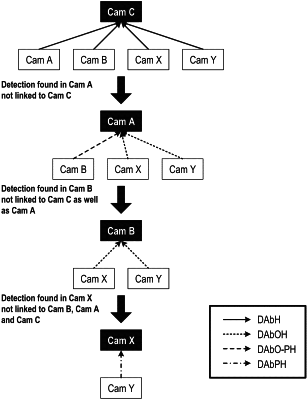| CPC G06V 20/647 (2022.01) [G06T 7/70 (2017.01); H04N 23/90 (2023.01); G06T 2207/10004 (2013.01); G06T 2207/20081 (2013.01); G06T 2207/20212 (2013.01)] | 20 Claims |

|
1. In an object recognition system having a plurality of two-dimensional (2D) cameras for detecting an identity of items placed on a stage, a fallback method to select camera pairs for purposes of performing data association between cameras, the fallback method comprising:
designating one of a plurality of two-dimensional (2D) cameras as a first camera defining a frame of reference and identifying one or more items in an image from the first camera;
for each of the plurality of 2D cameras that are not designated as the first camera:
identifying one or more items in an image from the 2D camera;
using a first transformation technique, performing data association of the one or more items identified in the image to generate item inferences between the image from the 2D camera and the image from the first camera; and
determining whether all of the identified one or more items in the image from the 2D camera are also present in the image from the first camera; and
for each missing item found in an image from one of the plurality of 2D cameras that are not designated as the first camera, but not found in the image from the first camera:
designating a different one of the plurality of 2D cameras as a second camera; and
for each of the plurality of 2D cameras that are not designated as the first camera or the second camera:
using a second transformation technique, performing data association of the missing item identified in the image from the 2D camera and the image from the second camera to generate item inferences between the image from the 2D camera and the image from the second camera; and
determining whether all of the missing items in the image from the 2D camera are also present in the image from the second camera.
|